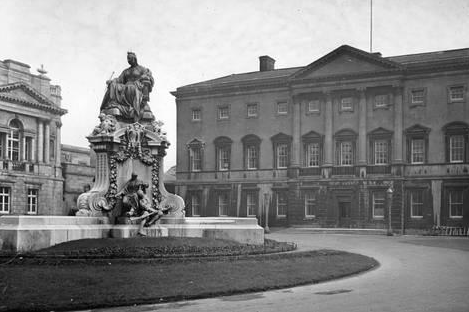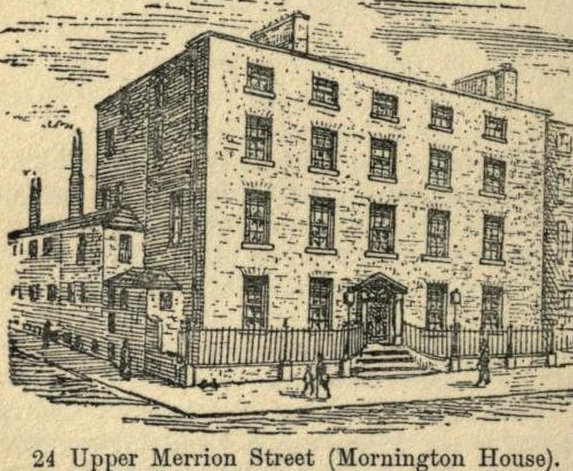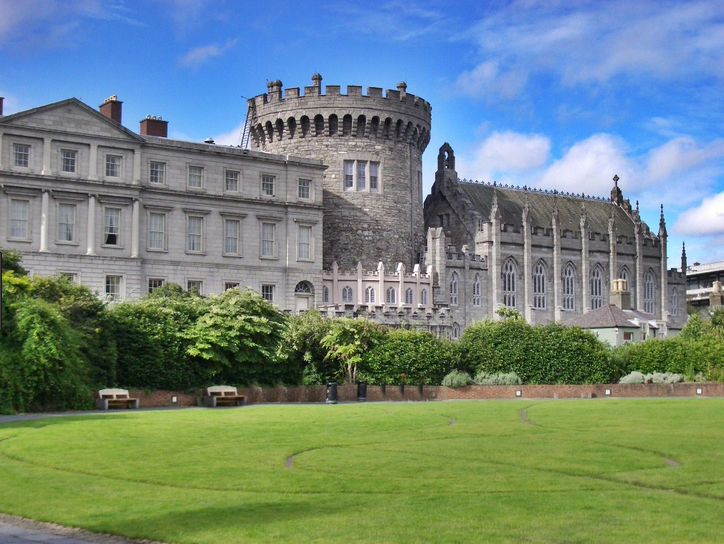Politics, Passion and Intrigue: The Story of the Merrion Hotel
OCTOBER 2018
Behind the elegant façade of the Merrion Hotel lies a rich history of Lords, Ladies, famous names, and the story of Ireland itself.
Today, Merrion Hotel teems with stories. People come to meet, explore Ireland’s capital city, hold meetings, plan new projects, holiday, escape and dream. But did you know that over the past two hundred and fifty years, these elegant buildings have been at the heart of some of the most crucial moments in Ireland’s history?
In 1766, one of Dublin’s Georgian visionaries, Lord Stanley Monck, commissioned the row of four perfect town houses that today make up the Merrion Hotel. He was wise in his choice of location: Leinster House, now seat of the Irish Government, is just across the road. Indeed, Leinster House was considered so ideal in proportion and design that it became the model for the White House in Washington DC.

In an era known as Dublin’s Golden Age, Georgian design was overlaying the Medieval city, widening the streets, and creating the famous squares. No 24 Upper Merrion Street was the finest of the four new buildings. Today it houses the main entrance of The Merrion, but back then it was leased by Garret Wesley, Lord Mornington. His son, Arthur Wellesley, who would go on to become the Duke of Wellington, hero of Waterloo, and Prime Minister of the United Kingdom, was born within these very walls.
Garret Wesley was a musical prodigy. By the age of 14, he had taught himself harpsichord, violin and the organ. He made Mornington House a centre of Dublin’s social life. He was also a philanthropist, hosting charitable concerts, and raising enough money to establish a hospital in Townsend Street, which aided thousands of families. Music and charity were to be his undoing, however, and he fell into debt.
By 1791, Nicholas Lawless had taken over the lease at Mornington House. Lawless was avid to rise in society, and an ambitious, ruthless businessman. He converted to Protestantism to ensure that nothing would hamper his ascent, and bought himself a peerage in order to sit, as the first Baron Cloncurry, in the House of Lords. Nicholas may have craved wealth and status, but his son, the wonderfully named Valentine Lawless, was an ardent supporter of Ireland’s cause.

Gatherings took place in the house, discussing Irish freedom and rebellion, and you can just imagine the atmosphere in what are now the Merrion’s rooms, as these passionate people plotted for their country. Valentine became a member of the United Irishmen, and although sent to London for his own safety, he began cultivating alliances there too. He was arrested on suspicion of treason, and was held in the Tower of London. Many think his father only voted in favour of the Act of Union because of his son’s imprisonment.
Nicholas Lawless died in 1799 and, on his release from prison in 1801, Valentine found the property and estates in disrepair, and his fortune dwindling. The lease on Mornington House had to be sold, and it went to the one person who could not have been more opposed to Valentine’s views: Robert Stewart, Viscount Castlereagh.
Castlereagh was a cold but exceptionally handsome man, and as committed to The Crown as Lawless had been to Ireland. It can hardly have been a coincidence that he chose Mornington House as his residence. He was Chief Secretary at Dublin Castle, and the rooms of No 24 now welcomed the conversations of monarchists, and those pushing through the Act of Union, instead of the republican, revolutionary talk that had previously found its home here. Castlereagh was deeply unpopular, but the Act of Union was passed and Ireland was governed directly from London until the foundation of the Irish State in 1922.

So, from the heart of Irish society, creativity and philanthropy; through revolution and treason, to a fierce loyalty to the Crown, and back to independence again; the walls of the Merrion ring with stories, passionate belief, plots and intrigue.
Following a painstaking and intensive restoration by brilliant craftspeople, designers, artists and makers, the Merrion Hotel was officially opened in 1997. This brings these four townhouses full circle. In today’s hotel, meetings are still made, agreements brokered, alliances formed. People come to relax, and to embark on new adventures. But listen closely and you might just catch the whispers of previous eras. We love to think of them echoing round these elegant walls, across the centuries of Ireland’s story, right up to the present day.



